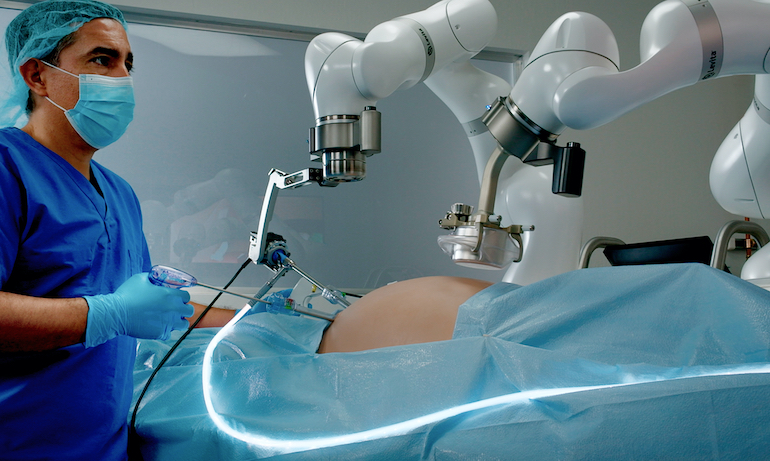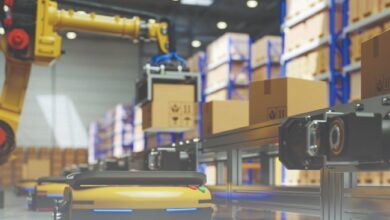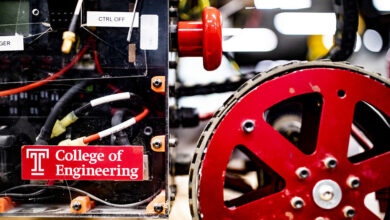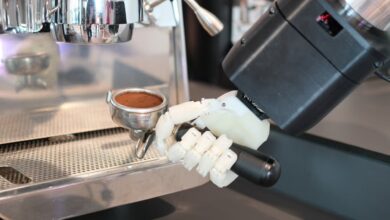Levita Magnetics to use RTI Connext for real-time data transfer with MARS surgical robot

|
Listen to this article |

Levita is using Real-Time Innovations’ Connext with its robotics surgical system. Source: Levita Magnetics
Real-Time Innovations today announced that Levita Magnetics has chosen RTI Connext to provide real-time connectivity for MARS, a surgical robotics platform that uses magnets.
Levita said it designed the magnetic-assisted robotic surgery, or MARS, system to improve patient outcomes and clinical efficiency in high-volume abdominal surgeries. Command and control in minimally invasive therapies must receive data communications correctly, said the Mountain View, Calif.-based company. Levita said it needed reliable, robust, and scalable software to transfer data in real time, ensuring patient and system safety.
“RTI Connext enables advanced controls and visualization in the surgical field, enriching the surgeon’s experience as well as patient care,” stated Chauncey Graetzel, vice president of research and development at Levita Magnetics. “We will continue to push boundaries through leading-edge innovation in surgical robotics while maintaining unwavering commitment to safety and security standards.”
 Submit your presentation idea now.
Submit your presentation idea now.
Levita readies MARS with AI, AR
Surgeon Dr. Alberto Rodriguez-Navarro founded Levita Magnetics in 2011. The company said it has developed the proprietary Levita Magnetic Surgical System and MARS to minimize the footprint of surgery and improve patient outcomes such as shorter recovery times, less pain, and better cosmetic results.
Levita said it has completed hundreds of successful surgeries in the U.S. and Chile. It completed its first cases with MARS in October 2023, and the system has U.S. Food and Drug Administration approval.
As artificial intelligence continues to grow in the healthcare industry, Levita claimed that it is the first company to use augmented reality (AR) for abdominal surgery. It is planning for AR to act as an accessory to MARS to improve visualization, enhance minimally invasive techniques, and promote collaboration within the medical field.
All of the most popular AR headsets will work with MARS, providing surgeons with comprehensive images and more accurate analysis of patients, said the company.
RTI facilitates robot communications
Founded in 1991, Real-Time Innovations said it provides the software infrastructure for smart distributed systems. Connext is based on the Data Distribution Service (DDS) standard. It enables secure real-time information exchange, modular application development, and rapid integration of distributed systems, said the Sunnyvale, Calif.-based company.
RTI said its Routing Service enables communication between two disparate communication protocols. This allows teams to efficiently design a flexible and holistic architecture to accelerate the development of clinical solutions, it claimed.
“The convergence of robotics, AI, data analytics, and visualization technologies is paving the way for a new era in MedTech with connectivity at the core,” said Darren Porras, market development manager for medical at RTI. “To fully leverage new technologies, robotically-assisted systems need to be designed with architectures that allow for rapid evolution while also addressing demanding and simultaneous requirements for reliability, cybersecurity, and performance.”
“We’re proud to work with Levita to leverage the power of magnets to reduce incisions and make surgery less invasive, delivering a triple impact that benefits patients, surgeons, and hospitals,” he said.
Connext users can build systems that combine advanced sensing, fast control, and AI algorithms. With 2,000 customer designs, RTI said it has expertise getting customers to production. In March, RTI said it was working with Cogniteam for robotics management.
RTI software runs more than 250 autonomous vehicle programs and supports dozens of advanced driver-assist systems (ADAS) and software-defined architectures. The company said it controls the largest power plants in North America, integrates over 400 defense programs, drives robots and medical technologies, and underlies Canada’s air traffic control and NASA’s launch-control systems.



